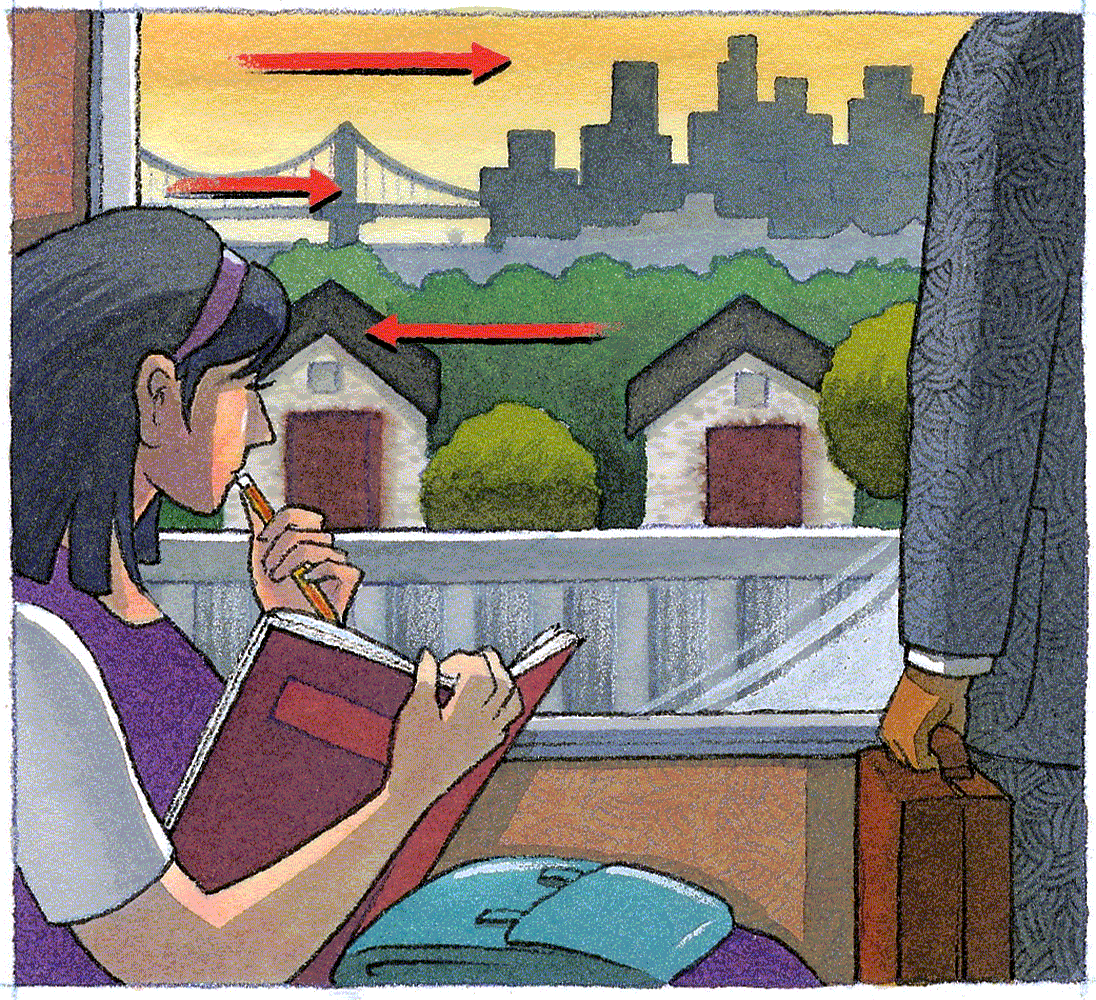Hello everybody! Today we will be discussing the topic of motion if you couldn't tell by the Aerosmith referenced title. I've gotta shoe-horn those rock n' roll references in there somehow! Anyways, what is
motion? To give you an abstract definition of this principle; it’s something
that is really always occurring. You usually say that a person sleeping is motionless,
but this is not true. Everything at all times is in motion. Even things like
rocks or mountains are really moving.
Another example of things being in motion is their changing position. When something moves from one place to another, it is changing its position and is in motion. An example would be a swimmer paddling from one end of the pool to another. The swimmer’s position changed, thus they performed motion.
Another example of things being in motion is their changing position. When something moves from one place to another, it is changing its position and is in motion. An example would be a swimmer paddling from one end of the pool to another. The swimmer’s position changed, thus they performed motion.
Next we
should go over relative motion. Determining if something altered its position,
you need a point of reference. Cats barely move at all throughout the day and
it’s pretty difficult to detect a change in position without using a reference
point. Let’s say my cat is sleeping by a chair and then later on it moves to
the other side of the chair. I can tell the cat moved by looking at its
position relative to my reference point; the chair.
You often hear about distance when dealing with motion and travel but have you ever heard of displacement? People often confuse the two together despite them being different. Distance is the entire length something has traveled whereas displacement is the difference in position between an objects starting and ending points. So if a guy walked 500 miles, then walked 500 more, just to be the man who walked a thousand miles to fall down at your door, the distance would be from his start point to his end point, your door where they fell at, which is a distance of a thousand miles! Another example of distance would be how far you walked from your house to your neighborhood pool. The displacement would be the distance between your house and the pool coupled with the direction you traveled; let’s say west.
You often hear about distance when dealing with motion and travel but have you ever heard of displacement? People often confuse the two together despite them being different. Distance is the entire length something has traveled whereas displacement is the difference in position between an objects starting and ending points. So if a guy walked 500 miles, then walked 500 more, just to be the man who walked a thousand miles to fall down at your door, the distance would be from his start point to his end point, your door where they fell at, which is a distance of a thousand miles! Another example of distance would be how far you walked from your house to your neighborhood pool. The displacement would be the distance between your house and the pool coupled with the direction you traveled; let’s say west.
Another very
important concept beneath the umbrella of motion is speed. Speed is the
distance an object has traveled in a unit of time. An example would be a car
going 54mph; for every hour the car travels it is going 54 miles. To graph
speed you use something called a distance-time graph. This lists an object in
motion’s distance over its time. Average speed of something can be found by
dividing the total distance of something by the total time taken by it. This is
different from instantaneous speed. Instantaneous speed is the speed of an
object at one instant in time. For example, let's say we've got a pickup truck blasting Lynyrd Skynryd from the radio as the driver travels to his sister's wedding; the truck's average speed may be 70mph (ten miles above the speed limit!),
but its instantaneous speed at one point in its voyage could’ve been different.
Perhaps the driver had to stop at a gas station to pickup a wedding gift; therefore the truck’s instantaneous speed at
this point is 0mph.
Velocity is the final concept I will be discussing. The velocity of something is its speed and direction of motion. If a car is going north at a speed of 30mph; the car’s velocity will be 30mph north.
That’s all
there is to it for discussing the rudiments of motion. I’ll leave you all with some interesting
facts about animals and their speed. The top 10 fastest land animals are:
Velocity is the final concept I will be discussing. The velocity of something is its speed and direction of motion. If a car is going north at a speed of 30mph; the car’s velocity will be 30mph north.
 |
| This formula is almost rigtht, but direction also should be factored in |
10. Gray Fox
9. Coyote8. Cape Hunting Dog
7. Elk
6. Quarter Horse
5. Lion
4. Wildebeest
3. Springbok4. Wildebeest
2. Pronghorn Antelope
1. cheetah
image credits:
Relative Motion
Speed
Velocity
Distance and Displacement
cheetah gif
iformation credit:
Glenco Science "Introduction to Physical Science" pages 282-287




No comments:
Post a Comment